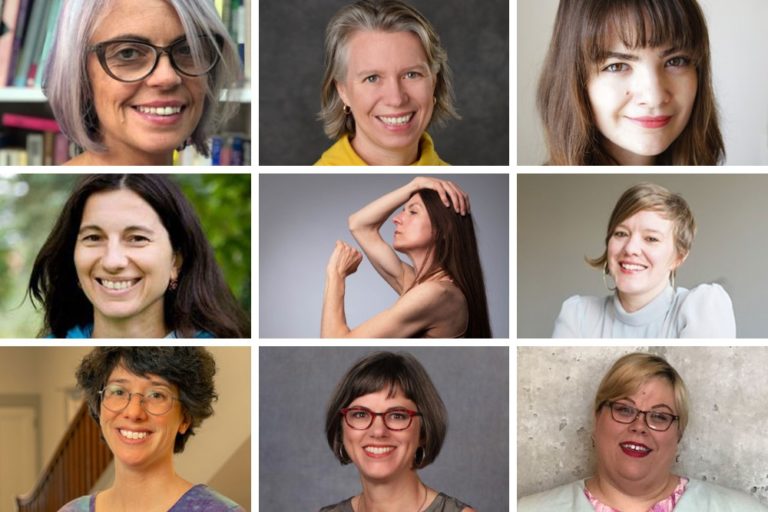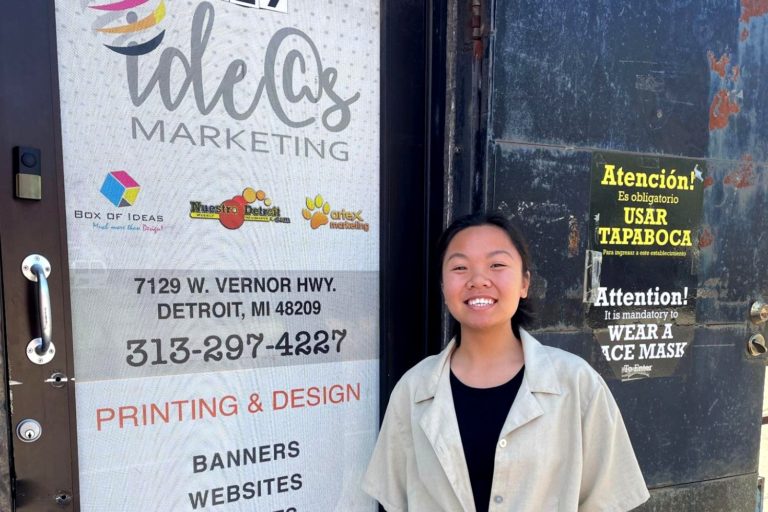Beginning with a day-long “unconference” for undergraduate and graduate student scholars, and bolstered by three plenary keynote session presentations from early-career academics and professionals, the recent Humanities, Arts, Science, and Technology Alliance and Collaboratory (HASTAC) Conference at Michigan State University projected a decidedly youthful, scholarly, forward-thinking vibe.

“This conference has been very special,” says Cathy Davidson, cofounder of HASTAC and Distinguished Professor; Director of the Futures Initiative at the Graduate Center of the City University of New York, “in no small part because the three keynotes were all by relatively junior people. So, here we all are, at all different parts of our careers, being incredibly inspired by the newest generation of scholars.
“That’s powerful; as a message far deeper than saying we must support new and innovative scholarship.”
As Staci Stutsman, a 4th year PhD student in the English department at Syracuse University, wrote on the HASTAC website:
“Scott B. Weingart, Carnegie Mellon University’s digital humanities specialist, opened the HASTAC conference this morning with his keynote talk Connecting the Dots. With humor and visualizations, Scott helped wake us all up and called us to action, to ‘design the community we want to live in.’

Said Weingart, “One of the values here is simply taking the digital world and making it physical. It’s about opportunities to get together and say, ‘Oh, this is a great idea. Let’s talk more about that and actually try to build something.’
“You get a perspective that you don’t normally get if you’re in a disciplinary background at a university. Because, despite the fact that there are mixers and events at your university, it’s very unlikely you are going to go out of your shell and interact with chemists and artists and education researchers.”
Numerous breakouts on a wide range of topics followed Weingart’s talk, as well as a “Lightning Talks” session and a research poster display.
It’s about opportunities to get together and say, ‘Oh, this is a great idea. Let’s talk more about that and actually try to build something.’
SCOTT B. WEINGART
At the end of day one’s conference program, the second plenary session was delivered by Cezanne Charles and John Marshall, co-directors of rootoftwo, a hybrid design studio that makes social objects, experiences and works for the public realm. Their talk focused on two recent projects, Whithervanes, and THR_33 (Tea House for Robots).
- Whithervanes is a Neurotic Early Worrying System (NEWS) that consists of a network of sculptures in the form of five headless chickens presented on the highest points of five buildings. The Whithervanes track and measure the production of fear on the Internet.
- The THR_33 (Tea House for Robots) installation, comprising a responsive environment and a group of robotically enhanced domestic appliances, proposes that as our appliances become smarter we might change the way we live and how we come to think of them.
“This is our first experience with HASTAC,” said Marshall, who is also an associate professor, and director of MDes Integrative Design at the University of Michigan, “but we’re old friends of the arts and sciences colliding with digital technologies. We realized we may be approaching material from different modalities, but it’s similar material and issues.”

“What we don’t see at other conferences is the coming together of disciplines that are typically segregated,” Risam said. “Rarely do we have the opportunity to talk with one another that we have at HASTAC. Then, too, hearing from earlier career scholars rather than only from those at mid and senior levels speaks directly to the HASTAC ethos of empowering scholars.”
Closing out the eighth global HASTAC Conference was a short reception and final poster session followed by Birds of a Feather Dinners at East Lansing area restaurants that were hosted by HASTAC members who led dinner discussions on various topical issues.
Charles, who is also director of creative industries for Creative Many Michigan (formerly ArtServe Michigan), agreed, and said, “We’re always interested in how things both can be collapsed and expanded upon, and that was clearly echoed in the opening plenary session; whether you’re talking about moving from isolation into a more open space, or about some of the things we heard on the games and learning engagement panels.”
Following Charles’ and Marshall’s plenary session, the end of day one of the 2015 HASTAC conference saw attendees enjoying a welcome reception at MSU’s Eli and Edythe Broad Art Museum.
It’s about networking; it’s about being an open network.
CATHY DAVIDSON
Day two saw many more breakouts and impromptu one-on-one and group discussions on topics ranging from rhetoric and visualization, to pedagogies and digital humanities. The Friday line-up also included a screening of Humanexus: Knowledge and Communication Through the Ages. This semi-documentary animated film visualizes human communication from the Stone Age to today and beyond.
The HASTAC 2015 closing plenary was delivered by Roopika Risam, an assistant professor of English and Secondary English Education at Salem State University in Salem, MA.

Titled Across Two (Imperial) Cultures: A Ballad of Digital Humanities and the Global South, Risam’s talk focused on the points of contact between science, culture, technology, and power to examine the challenges, affordances, and limits of the Global South as a geographical and epistemological category for the digital humanities.
Saturday and Sunday post-conference workshops were also well attended with subjects ranging from Text Mining with the Hathi Trust Research Center to Data Carpentry and Software Carpentry.
Commenting on what she hoped HASTAC 2015 attendees took away from the conference, Cathy Davidson said, ‘A couple things. I hope they leave with new ideas about their own research and teaching. Things they can take into the classroom next week or next term, and say, ‘I learned that, and I’m going to try it. I’m going to give to my students or my colleagues what I learned at HASTAC.’
“Second, that innovation doesn’t just have to come from the Stanfords, MITs and Harvards; that, all over the country, brilliant things are happening. For instance…I don’t think any place holds a candle to some of the things happening right here at Michigan State.
“So, innovation and equity, and how to share new ideas with other people rather than keeping them close,” Davidson said.
“It’s about networking; it’s about being an open network.”


